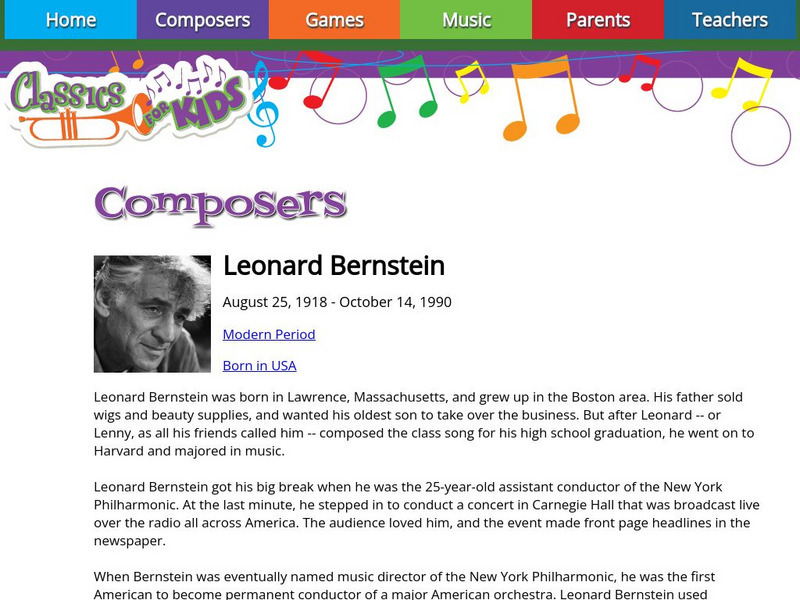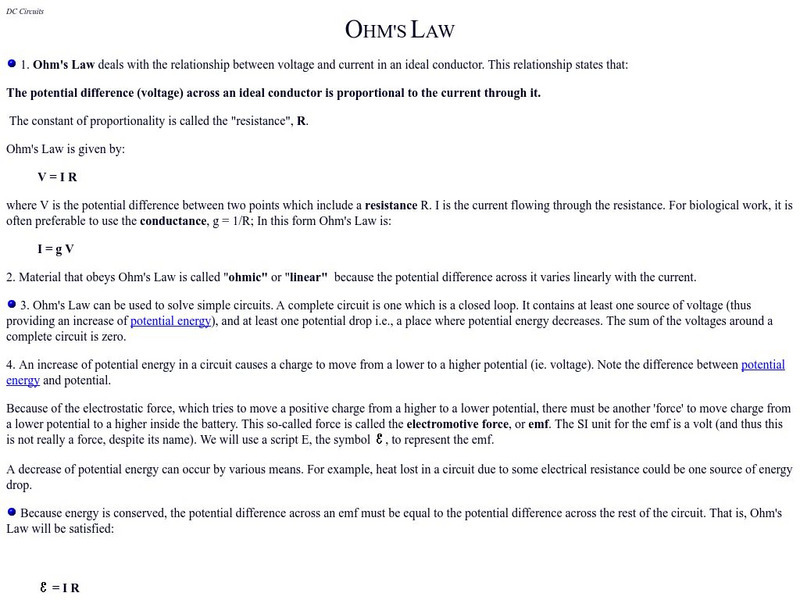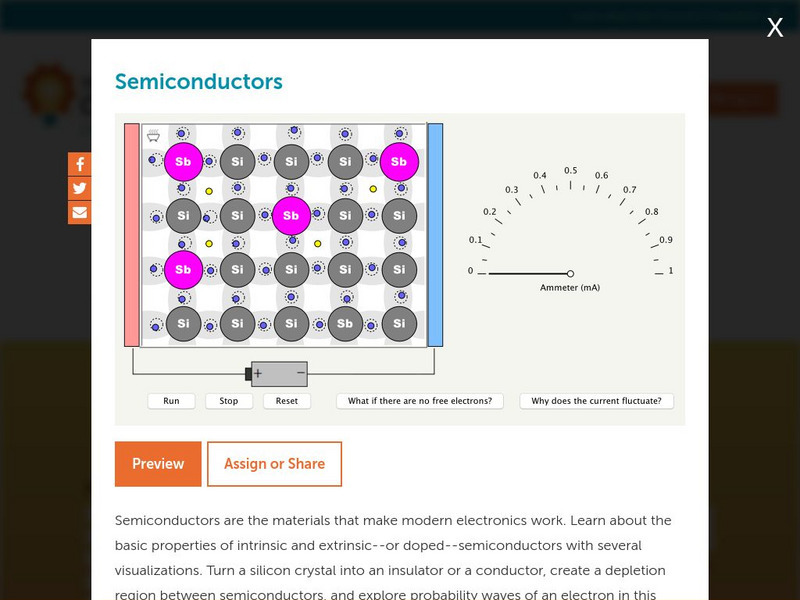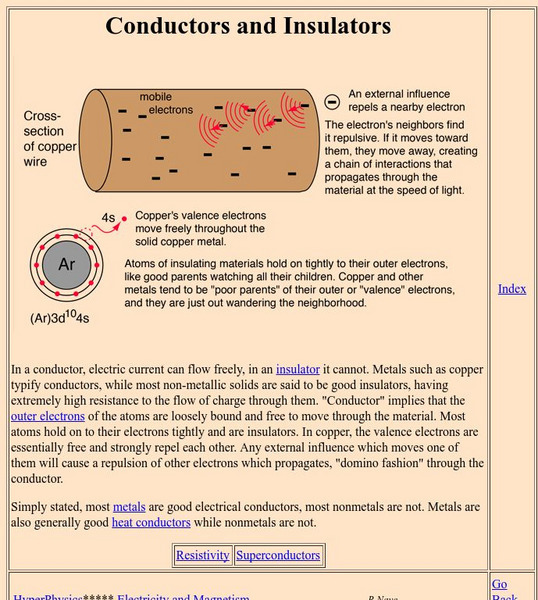PBS
Classics for Kids: Leonard Bernstein
A short biography of Leonard Bernstein (1918-1990 CE). Click to the past radio shows to hear his music and learn more about this famous composer.
PBS
Classics for Kids: Benjamin Britten
A short biography of Benjamin Britten (1913-1976 CE). Click to the past radio shows to hear his music and learn more about this famous composer.
Physics Classroom
The Physics Classroom: Inducing a Positive Charge on a Sphere
This tutorial from the Glenbrook South High School provides an animation depicting the induction charging of a single sphere by the process of induction. The movement of electrons is shown. The animation is accompanied by explanations of...
Physics Classroom
The Physics Classroom: Charging a Two Sphere System by Induction
From the Multimedia Physics Studios. An animation depicting the induction charging of a double sphere system by the process of induction. The movement of electrons between spheres and between the ground and sphere is shown. The animation...
OpenStax
Open Stax: Catherine Schmidt Jones: Conducting
The basics of conducting are presented here in this well written tutorial. Included are simple pictures and animations of simple conducting patterns.
CK-12 Foundation
Ck 12: Physical Science: Thermal Conductors and Insulators
[Free Registration/Login may be required to access all resource tools.] Thermal conductors and insulators and the ways they are used.
CK-12 Foundation
Ck 12: Physical Science: Metalloids
[Free Registration/Login may be required to access all resource tools.] Metalloids and their properties.
CK-12 Foundation
Ck 12: Physical Science: Metals
[Free Registration/Login may be required to access all resource tools.] Metals and their properties.
Other
The American Bandmasters Association
This is the website for the American Bandmasters Association which "is a select group of some 260 members and 60 associate members who have been recognized as outstanding concert band teachers/conductors [and] composers." Here, there are...
Physics Classroom
The Physics Classroom: Thermal Physics: Rates of Heat Transfer
Through illustrated examples and interactive examples, students investigate the topic of the rate of heat transfer.
Maryland Science Center
Maryland Science Center: Build a Conductivity Tester [Pdf]
Instructions on how to build an instrument that can be used to test which materials are conductors and which are insulators, in order to bridge a gap in an electrical circuit.
eSchool Today
E School Today: Electricity
Explore current electricity and different types of electric circuits.
ArtsNow
Arts Now Learning: Using Dance to Explore Electricity [Pdf]
After analyzing examples of conductors and insulators, 5th graders will work in small groups to craft a dance that depicts an electrical current and how it is affected by a conductor or insulator. Students will present their dances to...
University of Guelph
University of Guelph: Physics Tutorials: Ohm's Law
Explains Ohm's Law and some facts related to it.
Project Britain
Primary Homework Help: Electricity Questions
Brush up on electricity facts before taking this interactive quiz. Students can get immediate feedback by checking the answers after each question.
CK-12 Foundation
Ck 12: Fourth Grade Science: Physical Science: Electric Current
[Free Registration/Login may be required to access all resource tools.] Defines electric current and relates electric current to different materials (insulators and conductors).
Concord Consortium
Concord Consortium: Semiconductors
Semiconductors are the materials that make modern electronics work. Learn about the basic properties of intrinsic and extrinsic- or doped- semiconductors with several visualizations. Turn a silicon crystal into an insulator or a...
Khan Academy
Khan Academy: Conservation of Charge Review
Review the conservation of charge and how charge is transferred in various scenarios.
PBS
Pbs Learning Media: Balloon Charging Lab
Explore the behavior of electrons in conductors and insulators in this interactive simulation.
Intel Corporation
Intel Education: Circuits and Switches
By comparing household electricity to household plumbing, this tutorial makes the concepts of electricity easier to understand. Includes video clips and interactive activities; click on "Instructional Strategies" for teacher resources...
Georgia State University
Georgia State University: Hyper Physics: Conductors and Insulators
This site from Georgia State University provides information on the distinction between conductors and insulators. Factors contributing to the insulating ability of materials are discussed.
Science and Mathematics Initiative for Learning Enhancement (SMILE)
Smile: Ohm's Law
For the teacher planning a instructional activity or for the student preparing for a project or presentation. This page describes a series of simple activities related to the voltage-current-resistance relationship.
Wikimedia
Wikipedia: Electrical Conductivity
This is the encyclopedic entry for electrical conductivity from Wikipedia.com. The site provides a brief introduction to the topic but provides numerous links to information relative to the topic.
Michigan State University
Michigan State University: Equipotential Lines
This site is from Michigan State University's Elementary Physics II class and details equipotential lines. The site displays maps and diagrams as well as formulas and rules for these types of lines.

















